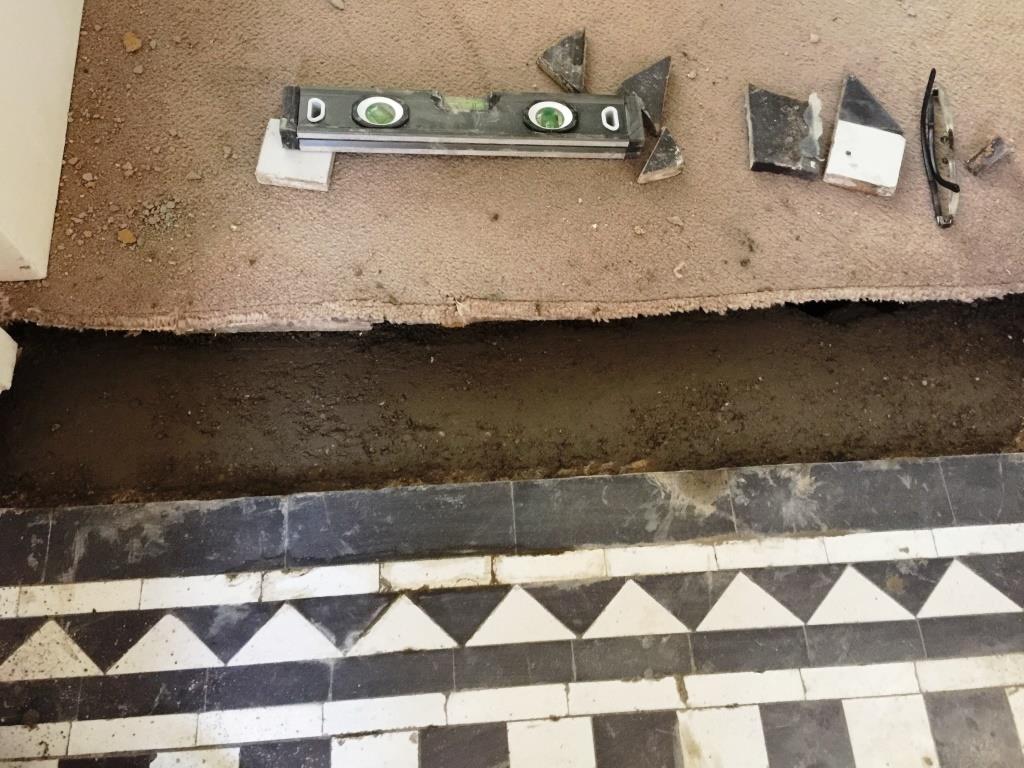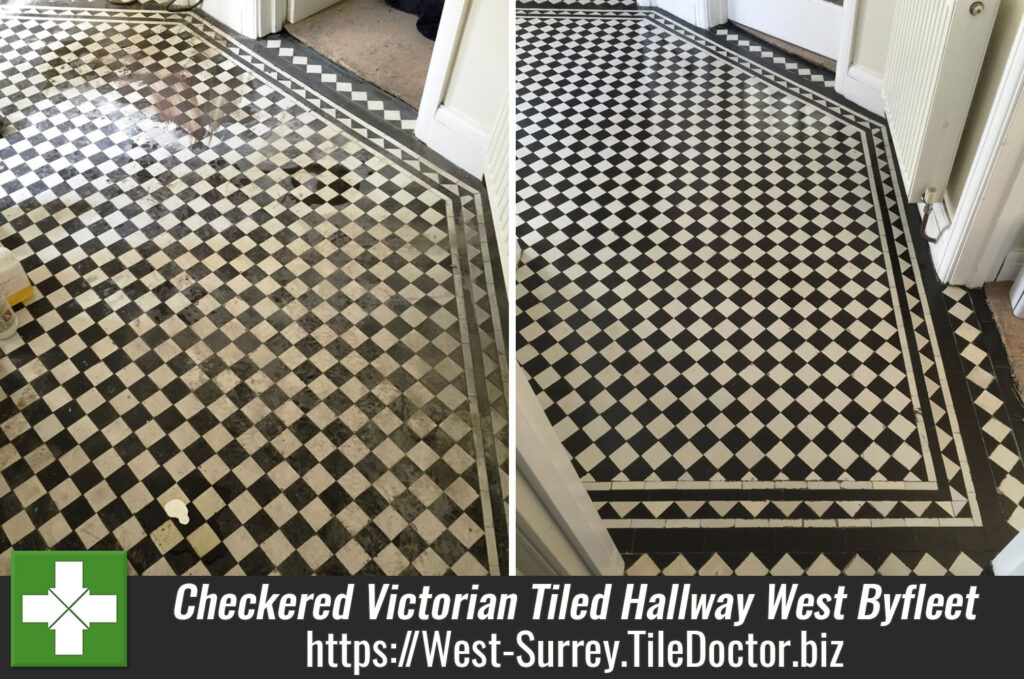Victorian floors are known for their intricate and interesting patterns – so when tiles are in need of replacement, sourcing ones which are consistent with original pattern can be a difficult task.
This was the case when recently I quoted for a clean and seal of a large black and white Checkered Victorian tiled hallway at a property in the town of West Byfleet, Surrey. The customer informed me they had engaged a tiler to lay black tiles in the door thresholds to match the others. I queried why the tiler was not planning to lay tiles of the same pattern to match the rest and apparently this was due to the fact that the tiler couldn’t source the appropriate tiles.

 |
 |
I set about laying the new tiles straight away, with my first action being to dig out the old cement that had been used to fill the gaps in the doorways, before making sure the sub base was flat. I then proceeded to carefully lay the tiles in a matching pattern.

Cleaning a Dirty Victorian Tiled Hallway
I then moved on to cleaning the Victorian tiles, immediately noticing numerous paint and glue stains that would have be to be tacked first. To address this problem, I applied Tile Doctor NanoTech HBU (formerly known as Ultra Clean), which uses Nano-sized particles to get beneath particularly tough stains and break them down. It’s suitable for use on a wide range of unsealed and sealed tiled surfaces, particularly where heavy dirt build-up occurs.
 |
 |
The product was scrubbed into the floor and then rinsed off using a wet vacuum to extract the soiled solution. Next I gave the tiles an acid wash using Tile Doctor Grout Clean-up, this acidic cleaner is good for tackling old cement and grout haze left on the surface of the tiles and following this I gave the floor a thorough rinse and steam to remove any trace of product.

Sealing a Victorian Tiled Hallway
I left the floor to dry completely for four days. Upon my return to the property, I gave the hallway a final light clean with Tile Doctor Neutral Tile Cleaner, just to ensure that the tiles were in the possible condition possible before being sealed.
Once satisfied with the results, I applied a single coat of Tile Doctor Colour Grow to seal the tiles. This is an impregnating sealer that will provide a long-lasting protection from the inside to mitigate the effect of the heavy wear caused by the high traffic of people walking in this area. In addition, the natural colours and shades in the black and white Victorian tiles are now enhanced, thanks to the colour intensifying properties in the product.


“Bill Bailey installed total confidence in us as customers. Completely sympathetic to our needs, with a total understanding to our requirements. Now whilst this wasn’t the cheapest quote we had, it was the most honest, which is why we decided it was the one for us. I can honestly say that Bill’s work surpassed our expectations and I would thoroughly recommend Bill Bailey to anyone who is thinking about having any tile restoration done or expert cleaning also. A very, very happy customer who will be using Bill Bailey for any tiling jobs we have in the future.”


We recommend using a specialist cleaning product such as Tile Doctor Neutral Tile Cleaner for the regular cleaning of for sealed surfaces. If you wish to use something else the read the label in detail first, most supermarket tile cleaners are only suitable for Ceramic tiles as they are acidic and this will erode and reduce the life of the sealer over time.